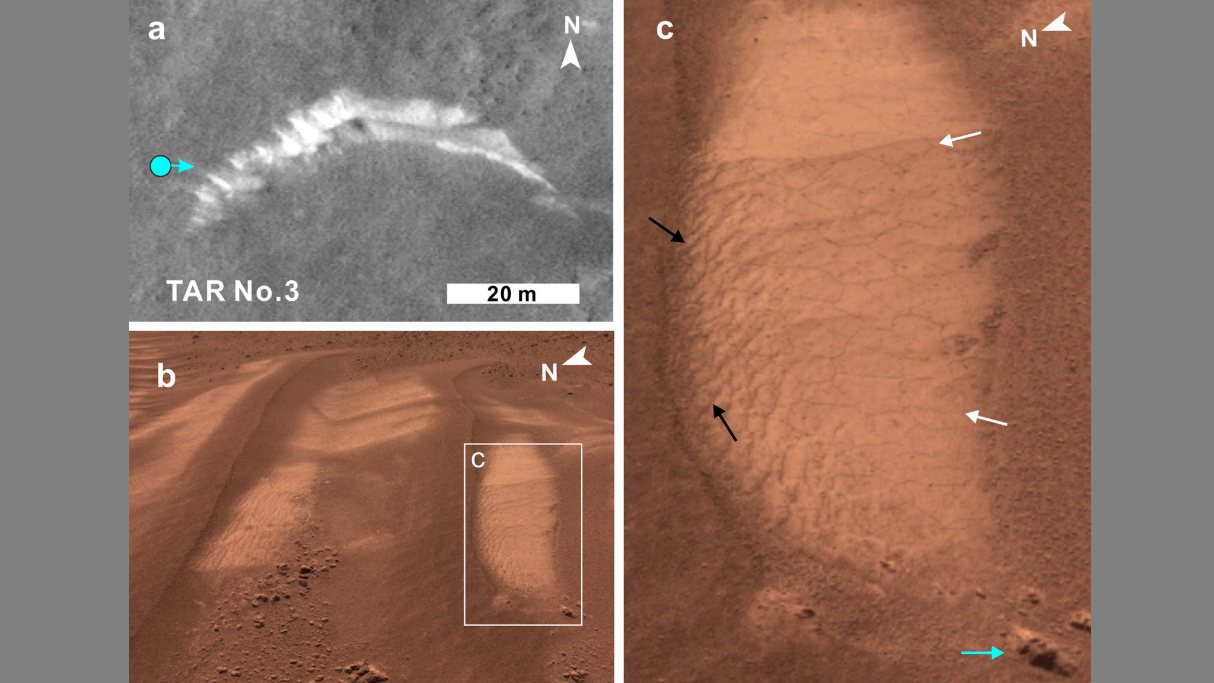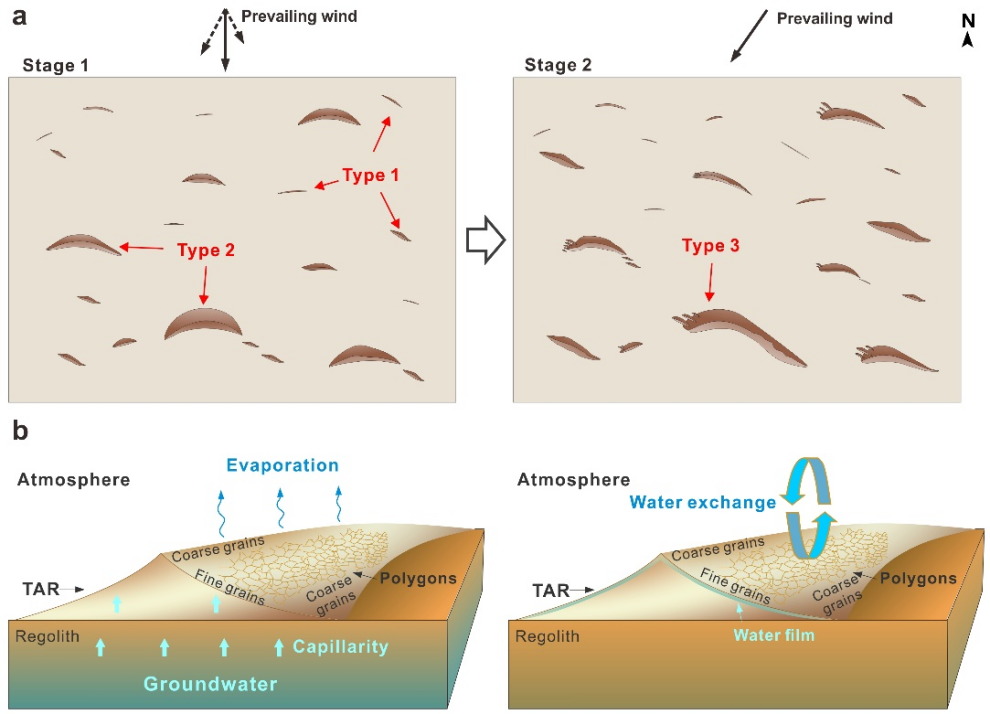
Polygonal features on the surface of TARs along the traverse of China's Mars rover Zhurong. /China Media Group
Polygonal features on the surface of TARs along the traverse of China's Mars rover Zhurong. /China Media Group
Scientists have identified polygonal features with hydrated minerals on Mars, providing new evidence of recent water activity on the red planet that sheds light on the hydrological cycle in its current cold and dry climate.
A research team from China University of Geosciences (Wuhan), by studying in-situ imaging and spectral data acquired by China's Zhurong rover, has identified some polygonal features with hydrated minerals such as gypsum on the surface of transverse aeolian ridges (TARs) in the rover's landing region of Utopia Planitia.
The researchers said these polygonal features "could be related to recent aqueous activity and atmosphere-surface water exchange on Mars."
The study was published in the scientific journal "Geophysical Research Letters" on March 28.
TARs, a kind of ripple-like aeolian landform widely distributed on Mars, are important to study the atmospheric motion and climate of the planet.
By using high-resolution remote sensing data, the researchers found a total of 354 TARs in a 2km by 2km region which includes the traverse of the rover in its first 100 Martian days, and conducted detailed morphological analysis on the TARs.
"Fresh-appearing polygonal features on the TARs are reported, which provides significant new evidence for recent aqueous activity on Mars," said the study.

Schematic model shows the two-stage evolution scenario for the TARs and the possible formation mechanisms of polygonal features on TAR surfaces. /China Media Group
Schematic model shows the two-stage evolution scenario for the TARs and the possible formation mechanisms of polygonal features on TAR surfaces. /China Media Group
Two possible formation mechanisms of the polygons were proposed, which are "contractional cracks formed during groundwater evaporation" and "fracture of indurated sand crust."
The researchers believed the latter is the "most plausible origin."